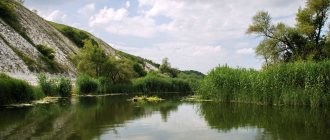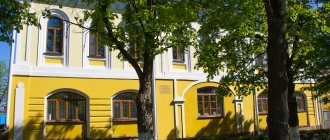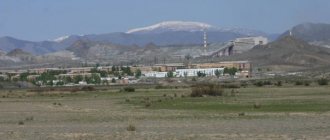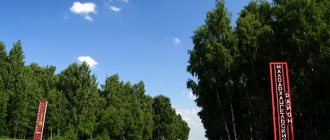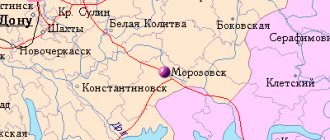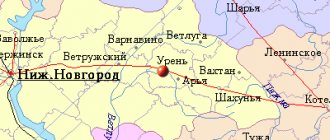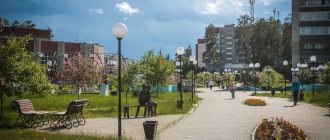Yuzha: areas, recreation, excursions, museums and churches, cuisine and restaurants, shopping and shops, attractions of Yuzha.
- Last minute tours
to Russia
Yuzha is one of those cities where you immediately feel especially comfortable. It’s small - it’s easy to get around in a couple of hours, but surprisingly unique, it will certainly be remembered by connoisseurs of architecture, lovers of classic Russian landscapes, and those who are looking for new gastronomic discoveries on their trips.
Local residents, southerners, are fluent in crafts forgotten in many other places: the wooden carvings that decorate the facades of houses alone are worth it. And almost every second of the southerners is an actor at the local People's Theater, which is more than 100 years old.
Yuzha: attractions | Cultural tourism
The ancient buildings of the weaving manufactory of the Balin merchants on the shore of the artificial lake Vasal are the historical center of ancient Yuzha, a quiet town lost among forests and swamps. In the press, Yuzha was called the most depressive city in Russia, an economic disaster zone.
The city is located on the shore of Lake Vasal, 95 km southeast of Ivanovo. The name comes from the Finno-Ugric “yuzga” - “swamp, swamp”. City status since 1925. Previously, the city had a station on the Balakhninsko-Shuiskaya narrow-gauge railway network. Travelers most often get to Yuzha in passing, on the way to Kholui, Shuya or Kovrov.
The settlement on the site of modern Yuzha has been known since the beginning of the 15th century. In the deed of gift of Prince Pozharsky, 1557, it is referred to as the Yuzhsky boundary, the name of which is a Russian adjective from the ancient Finno-Ugric hydronym Yug or Yuga - “river” (compare with Volzhsky from Volga). The village of Yuzha was named after this line (mentioned in 1628). Near the village of Yuzha in the 1860s. a paper spinning mill was built; the original hydronym was turned into Yuzha.
The Yuzhsky municipal district is located in the south-eastern part of the Ivanovo region, in one of the most protected corners of the picturesque Central Russian nature. The nearest railway stations are located within a radius of 50-90 km, air traffic is possible through Moscow airports and, in a fairly close future, through Ivanovo airport. The main vehicle is a car. The lack of well-maintained roads that allow the shortest route from Yuzha to the Vladimir and Nizhny Novgorod regions creates a “dead end effect” for the Yuzh region. The relative inaccessibility of the Yuzhsky district is one of the reasons for its additional attractiveness due to the fairly good preservation of natural potential, traditional Russian culture, way of life, folk arts and crafts.
10 km from Yuzha is the village of Kholui, a famous center of miniature painting on papier-mâché lacquerware. Kholuy art workshops and stitching factory are worthy of tourists' attention.
culttourism.ru
Helpful information
| Guest house "Russkaya Dacha" The guest house is located in the historical part of the city, in the area of an ancient park, founded by local manufacturers Balins in the vicinity of their estate about 150 years ago. The picturesque area on the shores of Lake Vasal, the silence of the coniferous forest, and ecologically clean forest air throughout the year make this place attractive to everyone who wants to improve their health or relax... | N56.57910 E42.02632 |
| Hotel "Central" offers 19 rooms of different price categories. In 2008, a major overhaul was carried out. | N56.58339 E42.00991 |
| Yuzha bus station Previously, the only means of communication with the outside world was the narrow-gauge railway Shuya - Talitsy - Balakhna, about 200 km long and with many branches for peat mining and to the pier named after February 8 on the once navigable river. Klyazma, along which cotton was delivered to the factory with transshipment at the pier. Passenger trains ran twice a day to Shuya and Balakhna, as well as to other points - there were no roads in the usual sense, and the dirt road was often impassable... | N56.58615 E41.99578 |
| Tourist base "Pristan" In the city there is a tourist base called "Pristan". From this place you can get to various attractions that attract with their unusualness. | N56.51500 E41.93218 |
Sights of Yuzha Ivanovo region, museums, monuments
Like many cities, the City of Yuzha has its own historical museums, which contain unique works of art, antiques, etc. The most interesting and noteworthy are the Municipal Museums of the city.
October 03, 2012 | | comments: 0
At the beginning of the 18th century, construction of a roller mill began on the Teza River. Today, this architectural structure delights everyone who approaches it.
October 03, 2012 | | comments: 0
The nature of the Yuga land is beautiful and rich. Its flora and fauna attract not only local residents. Many tourists come here to admire nature.
October 03, 2012 | | comments: 0
In 1910, for the social needs of the settlement, which was located on the territory of the city of Yuzha, the People's House was built. Currently, this architectural structure is still working, but it is called the House of Culture, which is located on Sovetskaya Street.
October 03, 2012 | | comments: 0
At different times in this territory, people were engaged in different trades, which left its own history for the descendants of these lands.
October 03, 2012 | | comments: 0
The city of Yuzha is beautiful not only for its architectural structures and attractions that were created in past centuries, it has enchanting natural spaces with amazing flora and fauna that its lands give.
October 03, 2012 | | comments: 0
The city of Yuzha is famous not only for the beauty of its churches and nature, but is also rich in historical villages that appeared long before the village acquired the status of a city. On the territory of the city, or rather on its borders, there are still several interesting villages that will be discussed.
October 03, 2012 | | comments: 0
The beautiful natural outline of the city is complemented by many small villages, each of which complements the history of the city in its own way. One of these villages is the Mugreevsky village. Its silence is replaced by robots, which are carried out by the peat industry.
October 03, 2012 | | comments: 0
On this page you will find information about what is worth visiting for guests of Yuzh. Sights, museums, monuments and other interesting places in Yuzha.
yuja.etowns.ru
Transport[ | ]
- There is a city bus station, and there are commuter and intercity flights to Moscow, Ivanovo, Kineshma, and Nizhny Novgorod. Passenger transportation is carried out by MUP Transremservice and OJSC Avtomobilist.
- In the early 2000s, Puchezh lost its significance as a port: the river station was closed, as a result of which water communications with other Volga cities and ferry communications with settlements on the opposite bank were stopped. In 2013, the renovation of the city pier was planned and carried out at the expense of the federal budget; now ships with tourists mooring to the city pier, carrying out tours along the Volga River.
- The nearest railway stations are in the city of Zavolzhye, Nizhny Novgorod region - 83 km, and in Kineshma, Ivanovo region - 117 km.
- Air traffic is provided from other cities: Kineshma airport – 117 km; Nizhny Novgorod International Airport – 143 km; Ivanovo airport – 170 km.
Ardatov says Mordovia
Yuzha - Cities and towns of Russia
City in the Ivanovo region, 15 thousand inhabitants.
(In the 1970s, the population reached 24 thousand.) It has had city status since 1925, but since the mid-19th century, factory production has been developing here, from which pre-revolutionary factory buildings, worker barracks and public buildings remain. Nowadays, perhaps, the most depressive city in the Ivanovo region. Residents of Yuzha are called southerners. It just so happens that of the 17 cities in the region, Yuzha is the southernmost (along with Gvarilov Posad). The city greeted me with a patriarchal landscape. (Near the bus station).
Stalin's two-story buildings on the street. Arsenyev (view from the yard).
The main street of Yuzhi is Sovetskaya. A beautiful wooden house, which, alas, stood directly opposite the sun.
The newly built Church of Seraphim of Sarov.
Next comes a block of mostly pre-revolutionary public buildings. School.
DK, former People's House.
Hospital complex.
It already looks like the 1930s.
Former almshouse, now something educational.
Constructivist fire department.
Now it’s a factory district. A spinning and weaving (or clothing?) factory from different sides.
As with most large factories, there is a quarter of workers' barracks. This one was built in 1901.
Plastered barracks. This doesn't happen that often.
Landscape with a water pump.
The factory from the side of the Pionerka River flowing through the city.
I didn’t photograph the Pioneer woman herself, but she was probably named after this one-armed heroine.
From across the river there are picturesque views of the city center.
Workers' village.
A quarter of the village on the southern bank of Pionerka.
Estate of former factory owners.
Now - other areas of Yuzha. Administration and Lenin.
Closer to the northern part of the city.
Eastern part of Yuzha. View across the bay of Lake Vasal. Further on is the village of Staraya Yuzha, which we did not reach.
A special attraction of Yuzha is the fence of the Vasilek kindergarten. Read more here.
russiantowns.livejournal.com
Notes
- ↑ 123
www.gks.ru/free_doc/doc_2016/bul_dr/mun_obr2016.rar Population of the Russian Federation by municipalities as of January 1, 2016 - THE USSR. Administrative-territorial division of the union republics on January 1, 1980 / Compiled by V. A. Dudarev, N. A. Evseeva. - M.: Publishing house "Izvestia of the Soviets of People's Deputies of the USSR", 1980. - 702 p. — P. 122.
- Order of the Government of the Russian Federation dated July 29, 2014 No. 1398-r
- ↑ 12
[yuzha.ru/investments/visitnaj_kartochka.html Official website of the Yuzhsky municipal district of the Ivanovo region History of the region]. - [www.old-yuzha.ru/history_yuzha.html Website of the Temple of the Smolensk Icon of the Mother of God in Old Yuzha History of the Yuzha region].
- [kopilka.wolfschanze.ru/naumov.pdf The fate of prisoners of war and deported citizens of the USSR. Materials of the Commission for the Rehabilitation of Victims of Political Repression] // New and recent history: journal. - 1996. - No. 2. - P. 92.
- ↑ 12345678910111213
www.MojGorod.ru/ivanovsk_obl/juzha/index.html People's encyclopedia “My City”. Yuzha - [demoscope.ru/weekly/ssp/rus59_reg2.php All-Union Population Census of 1959. The size of the urban population of the RSFSR, its territorial units, urban settlements and urban areas by gender] (Russian). Demoscope Weekly. Retrieved September 25, 2013. [www.webcitation.org/6GDOghWC9 Archived from the original on April 28, 2013].
- [demoscope.ru/weekly/ssp/rus70_reg2.php All-Union Population Census of 1970 The size of the urban population of the RSFSR, its territorial units, urban settlements and urban areas by gender.] (Russian). Demoscope Weekly. Retrieved September 25, 2013. [www.webcitation.org/6GDOiMstp Archived from the original on April 28, 2013].
- ↑ 123
[ivanovo.gks.ru/wps/wcm/connect/rosstat_ts/ivanovo/resources/4ce371004da3f783837cf741cd117b4b/itogi_vpn2010_table_volume_1.pdf Results of the 2010 All-Russian Population Census, volume 1. Number and distribution of the population of the Ivanovo region]. Retrieved August 8, 2014. [www.webcitation.org/6Rfo0NidC Archived from the original on August 8, 2014]. - [www.perepis2002.ru/ct/doc/1_TOM_01_04.xls All-Russian Population Census 2002. Volume. 1, table 4. Population of Russia, federal districts, constituent entities of the Russian Federation, districts, urban settlements, rural settlements - regional centers and rural settlements with a population of 3 thousand or more]. [www.webcitation.org/65AdCU0q3 Archived from the original on February 3, 2012].
- [www.gks.ru/bgd/regl/B09_109/IssWWW.exe/Stg/d01/tabl-21-09.xls Number of permanent population of the Russian Federation by cities, urban-type settlements and districts as of January 1, 2009]. Retrieved January 2, 2014. [www.webcitation.org/6MJmu0z1u Archived from the original on January 2, 2014].
- [www.gks.ru/free_doc/doc_2012/bul_dr/mun_obr2012.rar Population of the Russian Federation by municipalities. Table 35. Estimated resident population as of January 1, 2012]. Retrieved May 31, 2014. [www.webcitation.org/6PyOWbdMc Archived from the original on May 31, 2014].
- [www.gks.ru/free_doc/doc_2013/bul_dr/mun_obr2013.rar Population of the Russian Federation by municipalities as of January 1, 2013. - M.: Federal State Statistics Service Rosstat, 2013. - 528 p. (Table 33. Population of urban districts, municipal districts, urban and rural settlements, urban settlements, rural settlements)]. Retrieved November 16, 2013. [www.webcitation.org/6LAdCWSxH Archived from the original on November 16, 2013].
- [www.gks.ru/free_doc/doc_2014/bul_dr/mun_obr2014.rar Table 33. Population of the Russian Federation by municipalities as of January 1, 2014]. Retrieved August 2, 2014. [www.webcitation.org/6RWqP50QK Archived from the original on August 2, 2014].
- [www.gks.ru/free_doc/doc_2015/bul_dr/mun_obr2015.rar Population of the Russian Federation by municipalities as of January 1, 2015]. Retrieved August 6, 2015. [www.webcitation.org/6aaNzOlFO Archived from the original on August 6, 2015].
- [yuzha.ru/obrazobanie/shkola3.html Municipal secondary school No. 3]. Official website of the Yuzhsky municipal district of the Ivanovo region. Retrieved December 26, 2010. [www.webcitation.org/61GGnAcm1 Archived from the original on August 28, 2011].
Yuzha: attractions, photos, videos, reviews | Guide to Russia
The most sporting route “Land of the Leopard” has been opened.
0 0 0
Ural Airlines increased the number of flights to Kaliningrad from Moscow and St. Petersburg; More and more Russian pensioners are going to travel.
0 0 0
The law on protected areas will help solve some of the pressing problems.
0 0 0
Monument to I.S. Turgenev was opened as part of the Bezhin Meadow festival in the Tula region; The opening of the monument to Gabriel Derzhavin in the Orenburg region is timed to coincide with the 275th anniversary of the poet.
0 0 0
The second aircraft modeling festival “Wings of Siberia” took place in the Altai Territory, and “Shukshin Days in Altai” started in Barnaul.
0 0 0
The Museum of Slavic Literature will open in the Ukraine pavilion at VDNKh; in Yoshkar-Ola, the Gulag Museum was closed due to sanitary violations; in the Museum of the History of Cosmonautics. K.E. Tsiolkovsky in Kaluga a new exhibit has appeared.
0 0 0
The Federal Tourism Agency summed up the results of the WELCOME FOODBALL CUP mobile festivals “Gastronomic Map of Russia”.
0 0 0
They want to include a new plot of land in the “Land of the Leopard”, and an image of an Amur tiger will appear on the “Troika” maps.
0 0 0
600 artists took part in the Ugleche Pole festival, and the motorcycle parade in Yaroslavl brought together bikers from St. Petersburg, Yekaterinburg, Murmansk, Yaroslavl and other regions.
0 0 0
At the elevation of +2050 m at the Gorki Gorod resort, a tent camp “CAMP 2050” was organized.
0 0 0
strana.ru
Museums, Yuzha, attractions, Ivanovo region
Yuzha
The Yuzhsky district is a land of clear lakes, peat bogs, dense forests: dense spruce forests, light birch groves.
The very name of our land as the “Southern Frontier” is mentioned in the charter of the Pozharsky princes to the Spaso-Evfimiev Suzdal Monastery in 1556/57, and by some researchers it is derived from the word “yuzga”, which means swamp. Indeed, the area adjacent to the winding Lukh at its confluence with the Klyazma is very swampy. Perhaps this is a name of Finno-Ugric origin, the meaning of which is unlikely to be restored. The lands of the region are included in the interfluve of the Volga and Oka, where in the 6th - 19th centuries. Slavic colonization of territories inhabited by numerous Finno-Ugric tribes took place, from which many toponyms have been preserved: Yuzha, Teza, Klyazma, Kshhara, Cheremisino, etc. In the 14th century. the current southern lands were part of the Starodub principality, and during its division they formed the Ryapolovsky inheritance with its center in the ancient village of Ryapolovo. Since the 15th century. these lands were already part of the united Russian state. In the Yuzhsky district there were patrimonial lands of the Pozharsky princes, descendants of the Starodub princes. It was to the Mugreevo estate, where Prince Dmitry Mikhailovich Pozharsky was healing his wounds, that an embassy arrived from Nizhny Novgorod, asking the prince to lead the campaign of the people's militia against Moscow, which ended on October 27, 1612 with the liberation of Moscow from the Polish conquerors. In the town of Borok, where the people's militia stayed , and in the village of Mugreevo-Nikolskoye, memorial signs were erected in honor of the liberator of Moscow, Prince D.M. Pozharsky. According to the will of the prince, the Nikolskaya Borkovskaya hermitage was founded by his son in the town of Borok in 1612. The Teza River is known as an ancient trade route. Five wooden locks, cut down in the mid-19th century, which ensured navigation along it, still survive. The idea of creating this lock system belongs to Peter the Great, who visited Shuya in 1722 and immediately appreciated the prospects of Teza as a water trade route. Yuzha provides a striking example of transformation in the second half of the 19th – early 20th centuries. through the efforts of the Balin merchants, an ancient patrimonial village was transformed into an ancient textile factory village, which is a rare urban planning complex in terms of compositional integrity, combining industrial, residential and estate zones around the man-made Lake Vasal. This village is one of the most impressive examples of the implementation of the idea of a garden city and a comprehensive solution to social problems in the conditions of pre-revolutionary Russia.
The Yuzhskaya Land has many facets that make it potentially attractive to both domestic and foreign tourists. It is called Central Russian or Ivanovo Karelia, because there are about 100 lakes in it, picturesque, exceptionally interesting for their flora and fauna. About 40 km away is Lake Svyatoe, with an area of almost 300 hectares, exceptionally clean, well-warmed with high biodiversity and picturesque surroundings. This is a wonderful recreational area for children and adults. On the shore of the lake there is an actively developing convent, inheriting the traditions of the Svyatozerskaya Iverskaya Hermitage that was on this site, as well as a children's health camp. Lyulekh, Teza, Klyazma are environmentally friendly rivers that provide a combination of beautiful nature, picturesque landscapes and famous ancient villages located on the banks , including Palekh, Khotiml, Kholui, as well as a protected area for tourist kayakers - the unusually flowing Lukh River, with a wide glacial valley, carrying its waters to Klyazma.
muzei-muzeev.ru
Yuzha: attractions, photos, videos, reviews | Guide to Russia
Yuzha is, coincidentally, the southernmost and, perhaps, saddest regional center of the Ivanovo region. “Yuzga” means “swamp” in Finno-Ugric, and the ancient village, named after this word, was almost mired in some kind of depressive swamp by the 19th century. Travelers most often get to Yuzha in passing, on the way to Kholui, Shuya or Kovrov.
Yuzha officially became a city in the 1920s, but its heyday occurred at the end of the previous century. The most noticeable building of the city reminds of that era, more precisely, the whole complex of buildings of the weaving manufactory of the Balin merchants on the shore of the artificial lake Vasal. Until recently, the factory remained the main city-forming enterprise, as well as the historical center of Yuzha - a workers' settlement grew around it. Now the production is almost completely closed, but the powerful red brick walls have been preserved better than all other ancient southern buildings. In the former factory almshouse there is a city school, in the mansion of the owners, the merchants Balins, there is a kindergarten. The mansion looks modest in comparison with the factory buildings: a large wooden hut on the street with the appropriate name Dacha. Yuzha generally looks modest and bears little resemblance to a city: a lake in the center, almost village houses, pine forests approaching the outskirts.
The most beautiful southern architectural monument is also related to the weaving manufactory: the white stone People's House was built according to Gerlich's design in 1910, for the 25th anniversary of the Balin partnership. Today it is a House of Culture, that is, the specialization, in general, has not changed, only everything has become much more modest - no theater, no billiard room. There are almost no old churches left in Yuzha, except for churches in suburban villages and the recreated Smolensk Church on the remote Old Yuzha street.
Yuzha has only 14 thousand inhabitants, and this number is still decreasing. The inhabitants, by the way, are called southerners. As often happens, to revitalize the city, local authorities are trying to invent a tourist brand, especially since Yuzha is connected with such successful neighbors in this regard as Kholui or Balakhna. It would seem that there is already a “brand” in Yuzha - the Balins and their factory, the basis of the city. However, in recent years, obviously more popular historical characters have been taken as heroes - Kozma Minin and Dmitry Pozharsky. Minin was born in Balakhna, and the modern Yuzhsky district included the lands of the Pozharsky princes. In honor of this, two memorial signs have now been erected. The functions of the local history museum in Yuzha are performed by the House of Crafts, which “invites everyone to creativity,” as indicated on the sign. In the House of Crafts you can mold, paint, cut, sculpt or embroider something - there are 14 studios teaching folk crafts, ethnographic exhibitions are open, there is an exhibition hall and a folklore ensemble. Even more original interactive excursions are organized by the city bakery, almost as old as the Balin factory, but still operational. At the bakery, you can bake buns with your own hands using historical technology and try what you learn.
Yuzha can easily be called the cycling capital of the Ivanovo region. Everyone rides bicycles here, from young to old, there are many bicycle parking lots near the shops. Residents of the region themselves note that they have never seen so many cyclists as in Yuzha. Perhaps the reason for this popularity is Yuzhi’s roads: to put it mildly, they leave much to be desired.
The village of Yuzha was first mentioned in documents from the mid-16th century. Its name is associated with the Meryan “south” or “yuga” - river. The surrounding lands were part of one of the appanages of the small Starodub principality, which then passed into the possession of the Pozharsky princes, the ancestors of the liberator of Moscow Dmitry Pozharsky.
However, Yuzha-Nikolskoye would have remained an ordinary landowner village with the Smolensk Church (1795), if a paper spinning factory and Asigkrit Balin had not appeared in it. Having started working with fabric from his grandfather, the owner of a small dyeing establishment in the Shuya village of Dunilovo, Asigkrit Yakovlevich left ten million dollars in capital to his no less resourceful children.
The Church of the Holy Apostle Asinkrit (this is another spelling of the name Asigkrit; of course, the temple is also made of red brick), built in memory of him, on Sovetskaya Street is now occupied by the city art school. Therefore, the city authorities did not return it to the community of believers - in return they handed over to them the building of the people's court and prosecutor's office, which before the revolution was the manor house of the director of the Shuya manufactory, Mikhail Pavlov.
Soviet power also left its traces in Yuzha, although not as noticeable as Balin’s traces. For example, the city river has since been called Pionerka.
In recent times, the main road connecting Yuzha with the outside world was the narrow-gauge railway Shuya - Talitsa - Balakhna. Freight and passenger trains ran along the 200-kilometer railway, and bales of cotton were transported from the Klyazma piers to the factory. Now the Yuzhi railway station is empty, and the rails are gradually being removed from the tracks.
strana.ru


